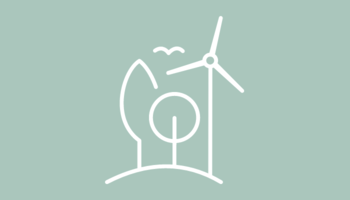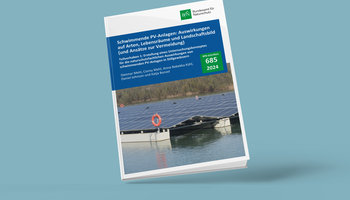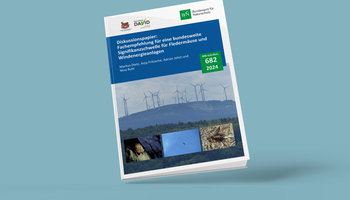The technical development in the wind power industry is constantly advancing with an increasing number of new turbine types. Therefore, the conflict potential for nature conservation must also be continuously re-evaluated. The threat to wind energy sensitive birds and bats depends to a large extent on the choice of location for the turbines. How the conflict potential is to be assessed with further increasing turbine height – or also with decreasing turbine height and increasing rotor area – has not yet been sufficiently described. Against this background, the project aims to analyse the potential impact in connection with the available avoidance measures and to identify options for action. Detailed research and information gathering for all German regions delivers the basis of the assessment.
While the average rotor diameter of wind turbines in Germany continues to increase, different tower and power output configurations can be designed at the same time. Depending on the chosen turbine configuration, the distance between the rotor tip and vegetation can narrow down. At the same time, more and more small wind turbines are entering the market. Thus, depending on the turbine type, impacts on the activity areas of many bird and bat species vary, which can change the general collision risk.
The following questions play an important role in the project:
- Tracking possibilities in the face of large rotor diameters
Since about 2010, the average diameter of rotors in Germany has steadily increased to 118 metres. With regard to species surveys, technical limitations or new challenges arise. For example, it is questionable whether the range of the detectors for recording bats in the nacelle entirely covers the area swept by the rotor. This would run the risk of (no longer) providing sufficient protection for particularly endangered and protected species. The project therefore aims to determine whether the data collection on the turbine types of the newer generations is sufficient to be able to determine the actual bat activity. - Impact due to higher turbines
The average hub height has also increased continuously in Germany and amounted to 132 metres in 2018. Wind turbines can now reach a total height of 240 metres and are no longer placed only in open areas, but also in forests. With this increasing total height of wind turbines, a change in the impact situation is likely, especially for migratory bat and bird species, a fact which needs to be covered in the project. - Endangerment situation due to low lower rotor clearance
By now wind turbines for strong and weak wind sites are available on the market. Depending on the chosen turbine configuration, the distance between the rotor tip and the vegetation can be very small, sometimes only 11 metres. Scientific findings on the activity areas of birds and bats suggest that decreasing the distance between the rotor tip and the earth's surface the rotor of wind turbines increases the rotors’ overlap with the main activity area of many bird and bat species, which may significantly increase their collision risk. The extent to which this is the case must be determined within the project. - Small wind turbines (SWT) in urban areas
Despite their low performance, small wind turbines are playing an increasingly important role in the concept of climate-neutral urban development. On one hand, there are large numbers of manufacturers and technical systems, on the other there is a lack of studies that have investigated the risk posed by small wind turbines to birds and bats in the city. In consequence, the project is to provide findings on this matter.
Aims of the study:
- Nationwide research on regional planning and exemplary building regulations, for example height limits.
- Investigation into possible impact factors of new wind turbine types in terms of rotor diameter, total height (hub height) and smaller surface-to-rotor distances
- Research of two to five (anonymised) case studies of installed low and high wind turbines of the newer generations, including consideration of species protection requirements (the prohibition of killing of specially protected species in accordance with Section 44 (1) of the Federal Nature Conservation Act, BNatschG),
- Which forms take possible roll-out strategies for small wind turbines, for example in the German city states? The potential for conflict on the nature conservation side should therefore be determined and illustrated using a concrete example. An outline of ideas for determining the collision risk for birds and bats in the case of low wind turbines and building-mounted small wind turbines is to be compiled, including research into potential study sites and cooperation partners.
- Drafting a report on the need for action for the Federal Agency of Nature Conservation based on the compiled findings.
Methods
Within the framework of the project, new developments are to be researched in close coordination with the Federal Agency of Nature Conservation, which will then be presented and evaluated from a nature conservation perspective. To this end, it is necessary to obtain information from the federal states, including planning documents, publications and initial findings. The results and open questions are to be discussed with experts (including ornithological institutions) and subsequently published.


